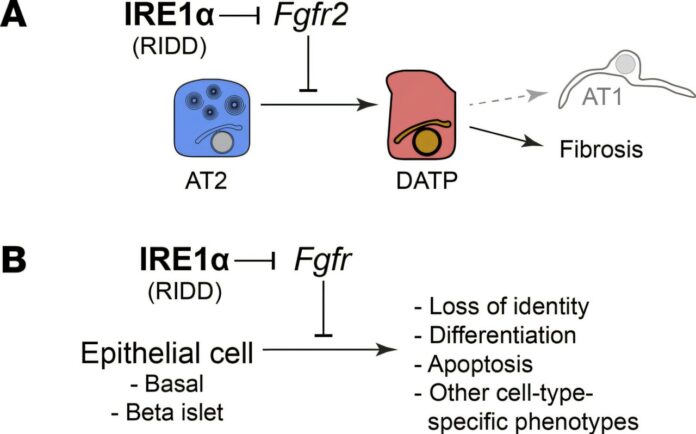Bone is a highly vascularized tissue, and the link between angiogenesis -blood vessel formation- and bone healing has long been discussed by the scientific community, with several studies describing the impairment of bone healing because of lack of or diminished angiogenesis. Traditional approaches like grafting often result in complications due to an inadequate vascular supply to implants, leading to poor integration and necrotic tissue.
To tackle this problem, researchers from IBEC led by Oscar Castaño, senior researcher at the Biomaterials for Regenerative Therapies group, developed a novel approach, recently published in Biomaterials Advances. They applied 3D bioprinting techniques to develop polylactic acid and calcium phosphate-based glass scaffolds that support angiogenesis and vessel maturation.
Bone comprises both a non-mineralized organic part (mainly collagen) and a mineralized inorganic part (mainly hydroxyapatite). In this structure, 3D porosity is needed to assure nutrient and oxygen transport, as well as to allow vascularization, cell infiltration, and waste removal.
Researchers’ approach was based on the use of calcium phosphate (CaP) based glass scaffolds to improve polylactic acid (PLA) properties to obtain a material that matches the chemical, mechanical, and biological needs of bone tissue.
The new PLA-CaP scaffolds allow for adequate vascularization, which not only heals the tissue, but also allows for efficient regeneration, resulting in the reduction or elimination of bone scarring. To create these scaffolds, researchers employed 3D printing to achieve precise control over the scaffold geometry, porosity, and surface characteristics.
“This innovative method allows for customizable scaffolds that mimic the structure of natural bone, essential for enhancing cell infiltration and nutrient exchange during the healing process,” explains Celia Ximenes-Carballo, first author of the study.
Tests conducted in vitro revealed that the 3D printed scaffolds supported human mesenchymal stem cell proliferation and stimulated the secretion of vascular endothelial growth factor—a critical factor that promotes blood vessel formation. In addition, the scaffolds maintained calcium ion release at physiological levels, another element vital for supporting vascularization.
On the other hand, in vivo testing of the scaffolds using a subcutaneous mouse model also demonstrated promising results. Within just one week of implantation, the scaffolds exhibited good integration and notable blood vessel infiltration. The PLA-CaP scaffolds were particularly effective, displaying increased vessel maturation after four weeks without signs of vascular regression.
The analysis of the blood vessels revealed that vessel walls were initially thin but became thicker and more stable over time. This progression indicates the scaffolds offer not just initial support for blood vessel growth but foster a conducive environment for durable vascularization essential for bone regeneration.
“We believe that our 3D printed scaffolds could revolutionize the way we approach bone regeneration. By enhancing vascularization, we can significantly improve healing outcomes and reduce the chances of complications associated with traditional grafting methods,” said Castaño.
The development of these advanced scaffolds highlights the synergistic effects of combining 3D printing technology with bioactive materials like calcium-releasing particles. The architecture of the PLA-CaP scaffolds not only facilitates improved vascularization but also supports osteogenesis, paving the way for more effective bone healing strategies with the potential to reduce graft failure rates.
More information:
Celia Ximenes-Carballo et al, Combining three-dimensionality and CaP glass-PLA composites: Towards an efficient vascularization in bone tissue healing, Biomaterials Advances (2024). DOI: 10.1016/j.bioadv.2024.213985
Provided by
Institute for Bioengineering of Catalonia (IBEC)
Citation:
3D bioprinted scaffolds enhance bone healing through improved vascularization (2024, December 20)
retrieved 20 December 2024
from https://medicalxpress.com/news/2024-12-3d-bioprinted-scaffolds-bone-vascularization.html
This document is subject to copyright. Apart from any fair dealing for the purpose of private study or research, no
part may be reproduced without the written permission. The content is provided for information purposes only.


